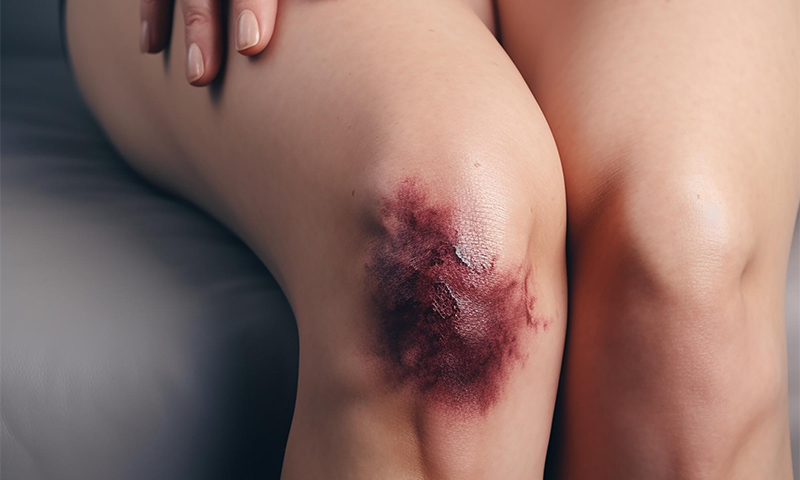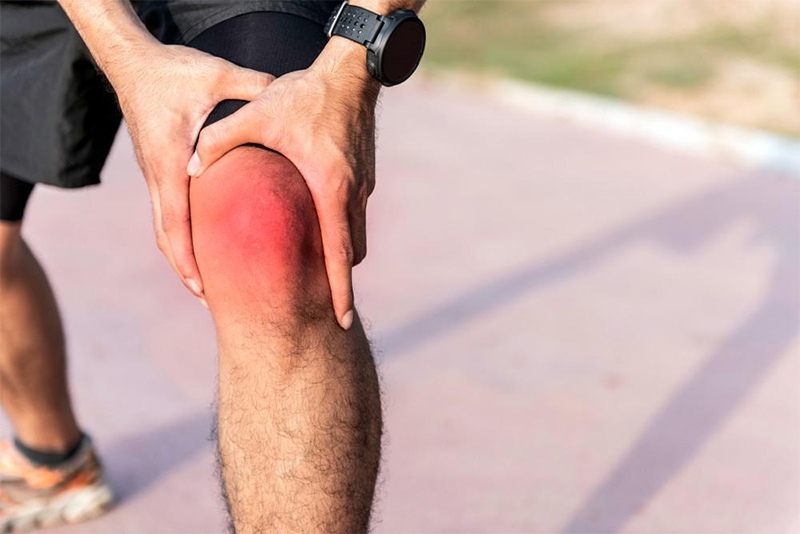What Causes Soft Tissue Injuries in a Rear-end Accident?
A soft tissue injury refers to damage to the body’s connective tissues, which include muscles, tendons, and ligaments. When it comes to rear-end car accidents, soft tissue injuries are especially common and can have significant implications for those involved.
While these injuries may be considered minor compared to broken bones or spinal cord injuries, they should not be overlooked.
Soft tissue injuries can cause chronic pain and limit the quality of life for accident victims. It is important for those involved in car accidents to seek medical care promptly, as these injuries may not be immediately apparent.

According to a study, drivers in the 25- to 34-year-old age group had a 1.9 times higher likelihood of being involved in rear-end crashes compared to other age groups. [1]
Common Soft Tissue Injuries That Can Be Sustained in a Rear-End Collision
Sprains and Strains
Sprains and strains are among the most common soft tissue injuries sustained in rear-end car accidents, particularly in rear-end collisions. These injuries occur when the force of impact (sudden trauma) causes stretching or tearing of ligaments, muscles, and tendons.
Sprains specifically refer to injuries to ligaments, which are the tissues that connect bones to each other. When a car suddenly stops or is hit from behind, the sudden forward movement can cause the ligaments to stretch beyond their normal range, resulting in a sprain. It can either be a partial tear or a complete tear.
On the other hand, strains occur when muscles or tendons are stretched or torn. In car accidents, strains often occur due to the sudden force exerted on the body. The muscles and tendons responsible for supporting the head and stiff neck, such as those in the neck and shoulders, are particularly vulnerable to strains during rear-end accidents.
Common symptoms associated with sprains and strains include bruising, swelling, muscle spasms, stiffness, and pain. These symptoms can vary in severity depending on the extent of the injury. While minor sprains and strains can usually be treated with rest, ice, compression, and elevation, more severe injuries may require medical attention, physical therapy, or even surgery.
Whiplash
Whiplash is perhaps the most well-known soft tissue injury in rear-end accidents. It occurs when the head and neck are forcefully jerked forward and backward, causing strain on the neck muscles and ligaments.
The symptoms of this neck injury can vary but commonly include neck stiffness, limited range of motion, and sharp neck pain. These symptoms typically develop within 24 hours of the accident, but in some cases, they may take longer to appear.
Whiplash is a condition that can greatly impact the quality of life for individuals involved in accidents. It can result in discomfort and challenges when carrying out daily activities. In some instances, it may result in chronic pain and long-term complications.

Speeds as low as 15 miles per hour can produce enough energy to cause whiplash in occupants, even when they wear seat belts. [2]
A study found that individuals who suffered from whiplash and related injuries still experience a lower quality of life compared to others, even five years after the accident. [3]
Contusions
Contusions occur when direct blows or impact the soft tissues and cause damage to the capillaries and blood vessels beneath the skin during a rear-end accident.
When a contusion occurs, the capillaries and small blood vessels near the surface of the skin can burst, leading to bleeding and the formation of a bruise. The severity of a contusion can vary, ranging from a minor injury to more severe bruising with visible swelling.
The bruised area may also appear discolored, often presenting as shades of red, blue, or purple. Over time the bruise may change colors as the body begins to reabsorb the trapped blood.
In some cases, a healthcare professional may recommend pain management techniques or prescribe medication to alleviate discomfort. Applying ice to the affected area immediately after the injury can also help reduce swelling.

Lacerations
In rear-end auto accidents, shattered glass and debris from the collision can cause sharp, deep lacerations on various parts of the body. These injuries can have a significant impact on accident victims, often leading to pain, bleeding, and potential infection risk. The severity of a laceration depends on the depth, length, and location of the wound.
Minor lacerations typically involve superficial cuts that can be treated with cleaning and bandaging. However, deeper lacerations may require immediate medical attention to control bleeding and prevent further damage. In such cases, stitches or sutures may be necessary to close the wound and promote proper healing.
Anterior Cruciate Ligament Tear (ACL)
An anterior cruciate ligament tear, or torn ACL, is a painful injury that can occur in the knee during a collision. This injury typically happens due to blunt force trauma or over-twisting of the knee, resulting in a tear in the soft tissue that connects the thigh bone to the shin bone.
When the ACL is torn, it can cause significant pain and instability in the knee joint. This injury often results in immediate swelling and difficulty walking or bearing weight on the affected leg. Individuals with a torn ACL may experience a decreased range of motion in the knee and have difficulty performing activities that require sudden stops or changes in direction.

Pinched or Compressed Nerves
When soft tissues sustain a strain or sprain during a rear-end accident, they can become inflamed and apply pressure on delicate nerves. This increased inflammation and pressure can lead to the pinching or compression of nerves, resulting in a range of symptoms.
Common symptoms of pinched or compressed nerves include pain, tingling, numbness, and muscle weakness. The specific area affected will depend on which nerves are involved.
For example, if the nerves in the neck are affected, individuals may experience sharp neck pain and radiating discomfort down the arms. In more severe cases, pinched or compressed nerves can cause a decreased range of motion and motor function.
Steps to Take After a Soft Tissue Injury

When it comes to dealing with the aftermath of soft tissue injuries sustained in rear-end accidents, trust Goldberg & Loren accident attorneys to help you seek the compensation and justice you deserve.
Sources:
[1] NTHSA. (2007, October). Analyses of Rear-End Crashes and Near-Crashes in the 100-Car Naturalistic Driving Study to Support Rear-Signaling Countermeasure Development. US Dept. Of Transportation. https://www.nhtsa.gov/sites/nhtsa.gov/files/analyses20of20rear-end20crashes20and20near-crashes20dot20hs2081020846.pdf
[2] Facoep, J. P. C. D. (2021, November 18). Whiplash Symptoms & Treatments for Soft Tissue Damage in the Neck. eMedicineHealth. https://www.emedicinehealth.com/whiplash/article_em.htm
[3] Tournier, C., Hours, M., Charnay, P., Chossegros, L., & Tardy, H. (2016, January 5). Five years after the accident, whiplash casualties still have poorer quality of life in the physical domain than other mildly injured casualties: analysis of the ESPARR cohort. PubMed Central (PMC). https://bmcpublichealth.biomedcentral.com/articles/10.1186/s12889-015-2647-8

